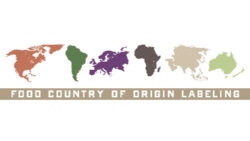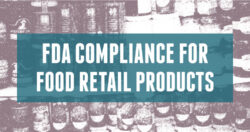I love the commentary that takes place on my articles in the comments section. I also get quite a few questions by email that aren’t published on the blog. I’m finding there is a great deal of valuable information we discuss. What I love most about answering all these questions is that it causes me to go deeper into my own knowledge, and at the same time it helps others. It’s a win-win! Below you will find a compilation of questions and answers. I hope you enjoy this first issue of what will be an ongoing series.
Q: I recently called the FDA hoping to have some of my questions answered regarding label formatting, but no one seemed to be able to answer my questions. I’m wondering how you got the info you list on your site. Did you speak to an FDA rep? I would love to follow your advice but I don’t want to get into hot water. Most specifically, I’d like to know if our label (9.25” x 4.25”) constitutes a “small package.”
A: The FDA does not personally assist with or answer questions regarding the development of food packaging.
All the information in my articles is extracted directly from the FDA’s extensive food labeling information on their website. A handy pdf they have available here is easier to search and has a lot of Q&A—everything in this pdf is on the website but there is much more on the website regarding requirements that are not in the pdf. However the pdf is a good summary (albeit 132 pages) of the basics. It does not contain the new updated information from the new nutrition facts format, so that is something to be aware of.
An intermediate package is >40 sq in and a small package is >12 sq in. This is covered in the pdf.
Q: Is there any FDA requirement to label the percentage of cacao in the dark chocolate used in confectionary manufactured in the USA? If so what is the requirement?
A: Not to my knowledge, only that the product meet the FDA description for being labeled as dark chocolate.
Q: I’m reading through the FDA site, and have the following question that I thought you might know the answer to. With the new nutrition facts label format, for packages with greater than 40 sq in available space, is the section below the “* The % Daily Value (DV) tells you…” footnote needed? I’m not clear if the section with the columns “Calories:”, “2,000”, and “2,500” is needed (with rows of content below them). I do understand that the “Calories per gram” section is not necessary.
A: They have phased out that section of the nutrition facts labeling with the new formats. It’s in the Federal Register of the changes. If you go to this link and search for “the footnote” it’s the 2nd instance in the search, on p4:
“Removing the requirement for the footnote table listing the reference values for certain nutrients for 2,000 and 2,500 calorie diets.”
Q: How do I develop a brand to make emotional connection?
A: By being honest and sharing the story of the people behind the brand (e.g., why did you create the brand? What was the need, the void in the marketplace, or the struggle overcome?), by sharing what you stand for as a brand (e.g., clean ingredients, or eating for optimal health, or making high quality baking easy for the non-chef, etc), your promise to your customers (e.g., gourmet baking made simple, or the secret to delicious baking, or always using the finest ingredients and handcrafting with care, etc.).
Sharing anecdotes is a great way of connecting too. A kids’ snack package I saw recently talks about a pet the owner used to have. It humanizes the brand and brings a smile to the consumer.
Basically, just avoid being sterile and stark in the words you use on your package and in any marketing.
Q: Are you selling the new templates for the New Nutrition Facts in .ai format?
A: You can download them for free from the FDA here (open the PDF in Illustrator).
Q: I use a copacker and on my label the statement says manufactured for. Can I put my business address instead of the copackers address on the label?
A: If it’s copacked then you can say it is manufactured for your company and use your address. Here is a link to the actual FDA regulation. See (e).
Q: In Canada the words “Net Wt.” are not required on the PDP only the actual quantity ex. 30 g / 1.05 oz. Can you let me know if the text “Net Wt.” must be used on the PDP in the US or will only the numbers suffice as they do here in Canada.
A: The Net Wt. labeling is required for weight declarations, regardless of whether the product is sold online or in retail. I can’t advise you on whether it’s OK to sell to companies to do market testing as that is not my area of expertise as far as regulation standards. Some companies will print a patch label to place over the existing labeling to make it compliant, and that is acceptable.
Q: We have vegetable tray where the ingredients are from the USA and Mexico, I.e. Carrots, Celery, Broccoli are from the USA and the Jicama sticks are from Mexico. Can I use 1 label for the Country of Origin Labeling, Product USA, Mexico or do I need 2 labels; (1) product of USA the other product of Mexico?
A: To my knowledge it is permitted to have one label stating both countries as the origin—eg, “Product of USA and Mexico.” This FAQ sheet from USDA addresses a similar question at the bottom of page 2.
Q: I am about to launch a private-label vitamin brand catering to the Latino market. I’d like to add a few words in Spanish on the label; the lab is giving me trouble with it (arguing CFR 101.15) while I can see that a high-profile competing brand does it. Any recommendations on how to argue my points?
A: It’s true that if you have any foreign language on the label then all the required information needs to be in the foreign language as well. I have seen FDA letters to brands with products in violation of this. It can be a huge risk to put products in the market with non-compliant labels as if/when the letter comes, you need to take immediate action to correct it and this can put some brands out of business. The FDA can’t police every single product on the market, so not everything you see is compliant. It’s always safest to be 100% compliant with your labeling and best to do it at the initial development.
Q: We have a coffee substitute and were wondering if we need a nutrition label. We are not making health claims so we thought we would be okay without one.
A: If it’s a single food consisting of either just coffee, tea or spices, then no labeling is required. If it’s a mix of these things, or if there are other ingredients, then you need nutrition labeling.
Q: I’m designing a label for a small gourmet food company. I’m looking for pastel shades that are the current trend, and want to see what colors would be appropriate. I’m looking at Pantone and Adobe for info but I can’t seem to get anything related to food, not fashion.
A: Food packaging colors don’t tend to follow color trends. There are other design trends for sure, but as far as colors this isn’t the case with food. The colors used often reinforce the flavor of the food for a visual cue to better process the information quickly. Depending on the overall design style of the package, the colors may be bright for a fresh/modern look, or muted for a more traditional or timeless look, or a mix. White packages and pastels don’t tend to stand out well on the shelf. That said, a package can still be done successfully in those colors if done right and in the right context and overall style. A favorite color inspiration site of mine is Design Seeds.
Q: How do I develop a brand to make emotional connection?
A: By being honest and sharing the story of the people behind the brand (e.g., why did you create the brand? What was the need, the void in the marketplace, or the struggle overcome?), by sharing what you stand for as a brand (e.g., clean ingredients, or eating for optimal health, or making high quality baking easy for the non-chef, etc), your promise to your customers (e.g., gourmet baking made simple, or the secret to delicious baking, or always using the finest ingredients and handcrafting with care, etc.).
Sharing anecdotes is a great way of connecting too. A kids’ snack package I saw recently talks about a pet the owner used to have. It humanizes the brand and brings a smile to the consumer.
Basically, just avoid being sterile and stark in the words you use on your package and in any marketing.
Now it’s your turn. What questions do YOU have that I can answer for you? Design, branding, strategy, compliance—send them my way via the contact page!




